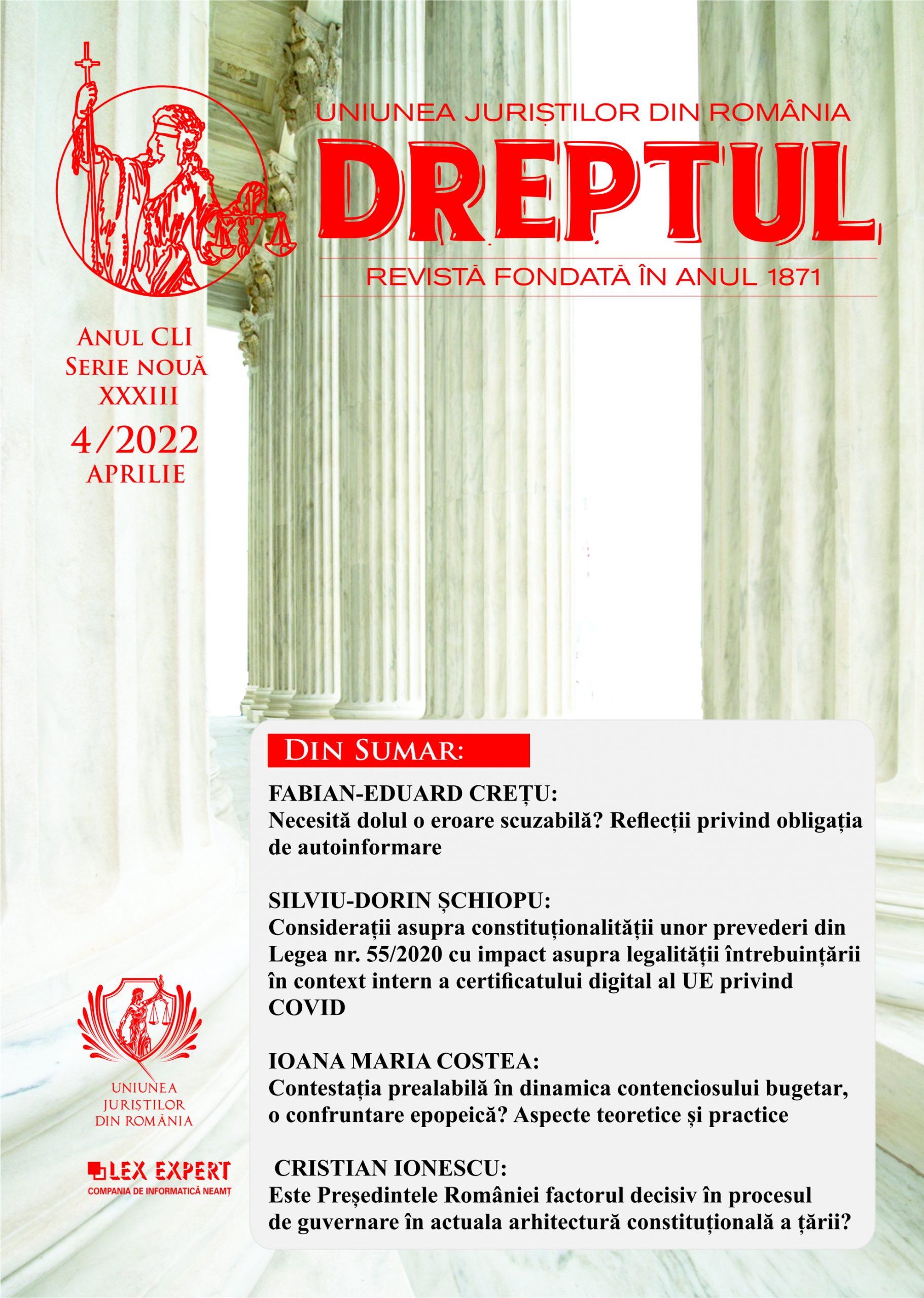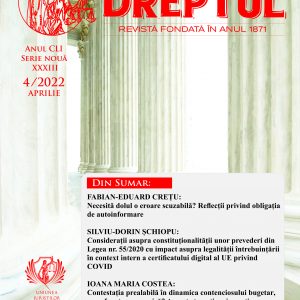In this study the author analyzes, from a double theoretical perspective – legal and politological –, the option of the constituent legislators from 1990–1991 for the semi-presidential republic, as a form of separation and balancing of the three powers in the state. Based on a relevant bibliography and on the parliamentary debates within the Constitutional Commission for the drafting of the Constitution and of the Constituent Assembly, the author submits to scientific reflection not only the points of view and arguments raised for discussion in the Constituent Assembly, but also the spirit of the constituent legislator referring to the type of political regime to be enshrined and defended by constitutional norm. There are presented, from the perspective of the constituent legislators, the positive and negative valences of the semi-presidential political regime. After many debates, the Constituent Assembly opted for the semi-presidential republic as a form of government after the overthrow of the old regime in December 1989. The author states that the legislators opted for a semi-presidential model of functioning and balancing powers which should preserve the role and the equal weight of the governing public authorities and which was, in its distinctive features, „very close to the classical parliamentary regime”. What the fathers of the 1991 Constitution wished to avoid – and this is clear from the parliamentary debates in the Constituent Assembly – was the institutionalization of some mechanisms and tools for exercising and balancing powers, which would allow in the future the President of the Republic to prevail in the actual political game, by subjecting the other public authorities. Therefore, the Constituent Assembly of 1990–1991 enshrined the institution of the President of Romania as a mediating factor in the governing mechanism, as well as
in the conflicts existing in society, and not as a decision-making authority for governing the country. The author points out that, in the three decades of semi-presidentialism, the powers assumed in the governing process by the President of the Republic have exceeded sometimes the constitutional framework prescribed by the Basic Law, which has fuelled and is still fuelling various proposals to correct the current constitutional framework.
ESTE INSTITUȚIA PREȘEDINTELUI ROMÂNIEI FACTORUL DECISIV ÎN PROCESUL DE GUVERNARE ÎN ARHITECTURA CONSTITUȚIONALĂ A ȚĂRII?
15.00lei


